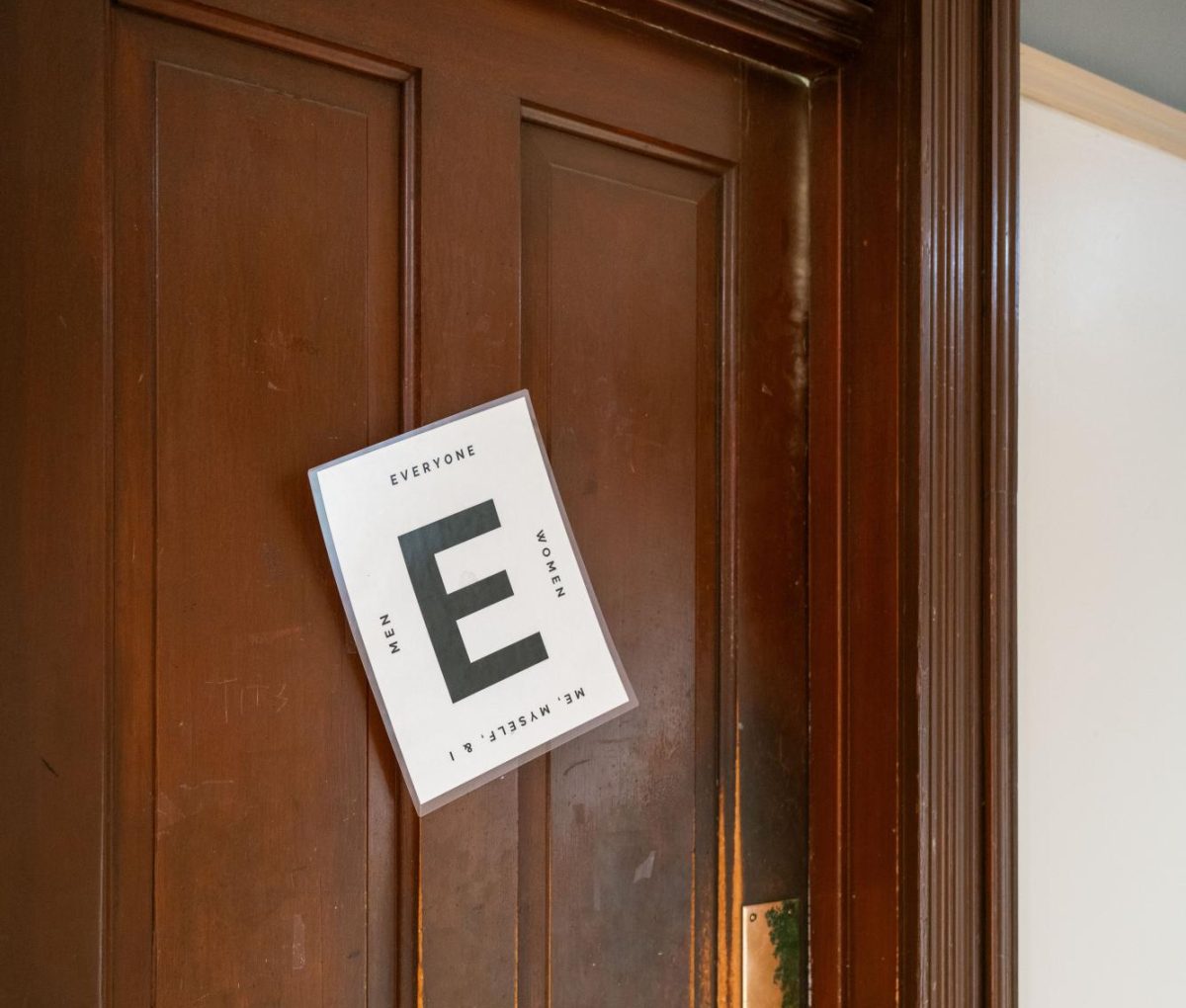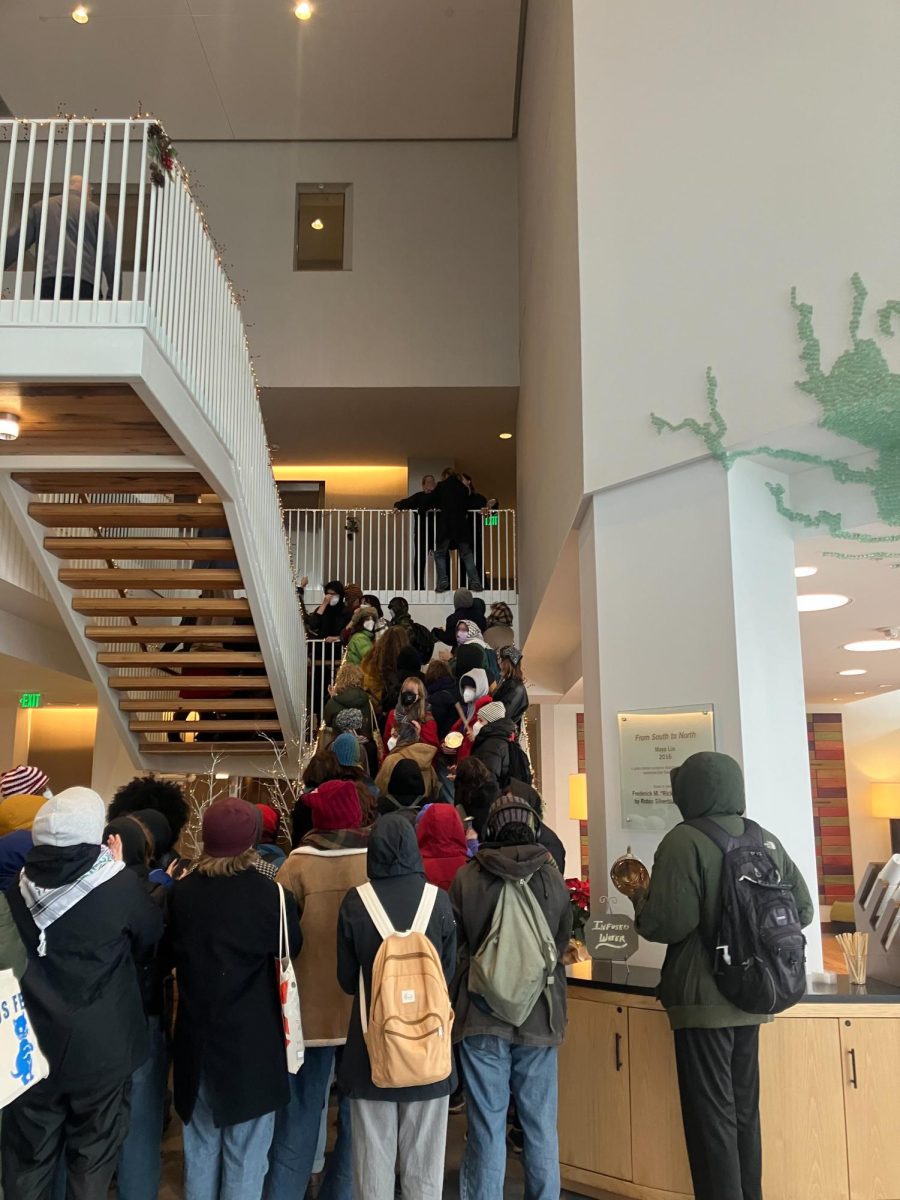Oberlin 3rd Highest in Reported Sexual Offenses Among Similar Schools
November 9, 2012
Oberlin ranks third in the number of sexual offenses among the nation’s top 25 private liberal arts colleges, according to a Review analysis of recently released federal data.
Release of the data comes as campus sexual offense policies are coming under greater scrutiny after students from several liberal arts colleges, including Oberlin, published personal accounts of on-campus assault through various media outlets that highlight problems with reporting process.
The Review analysis looked at the number of sexual offenses reported on campus over the last three years in the U.S. Department of Education’s national database of campus crime statistics. It compared Oberlin’s figures to those of the other schools ranked in the nation’s top 25 private liberal arts colleges, based on the most recent U.S. News college rankings. The Review found that over the last three years, Oberlin had the third-highest number of reports, with 21, trailing only Amherst College’s 36 reports and Vassar College’s 22. Also high on the list were Bowdoin College (19) and Haverford College (18). These statistics have not been adjusted for school size, which ranged from 777 students at Harvey Mudd to 2,959 students at Oberlin.
Camille Hamlin Allen, sexual offense policy administrator for Oberlin, attributes the school’s number of reports to a greater emphasis on reporting.
“Our policy has the concept of everyone’s duty to report,” she said. “I think that Oberlin students and the community itself take this duty to report very seriously, and it’s stressed from the moment freshmen come in.”
Sexual assault on college campuses is widely underreported, according to a 2010 report by the nonprofit Center for Public Integrity, so the actual number of assaults may be much higher at these institutions. Oberlin’s own campus crime report, released by the Office of Safety and Security on Oct. 1, in fact reports higher numbers, with five more incidents for 2010 than listed in the national database. The additional cases would push Oberlin’s ranking to second highest among similar schools.
According to Director of Safety and Security Marjorie Burton, the five additional reports were either reported to have taken place outside of Oberlin or did not give the exact location within campus, leading to the discrepancy.
“The Department of Education is much more restrictive on the numbers that they receive, and we try to be a little more open on what’s being reported to us,” said Burton.
Three weeks ago, on Oct. 17, an op-ed published in the Amherst campus newspaper by a former student detailed her account of sexual assault at Amherst and claimed that the school handled the situation so inappropriately that it led her to transfer while the perpetrator went unpunished and graduated soon after.
The Amherst op-ed went viral almost as soon as it was posted, crashing the Amherst Student’s website. Following the post, several other survivors have come forward to share their own accounts of on-campus sexual assault, including a former Mount Holyoke student who wrote that she was also assaulted on the Amherst campus, an alumna of University of Wisconsin-Madison and a Tufts student.
Amherst responded to the op-ed by announcing an investigation and plan to overhaul its sexual offense policy. Last Friday, the school canceled classes to hold an all-day, campus-wide event discussing the sexual offense policy. In addition, Amherst students have created an online magazine, It Happens Here, to publish Amherst students’ personal experiences with sexual violence and raise awareness of the issue on campus.
The controversy has reached Oberlin as well. Less than a week before the Amherst op-ed piece, an Oberlin student went public with her own account of a sexual assault that occurred on campus last April and of what she described as a problem-plagued adjudication process. Last Monday, President Marvin Krislov announced in a letter to the school published by The Source that he was creating a task force to examine Oberlin’s sexual offense policy.
“I have launched a task force that will be charged with reviewing our policies and practices for reporting and responding to sexual offense,” he wrote. “The task force will include student, faculty and staff representatives, and will be responsible for producing a report during this academic year.”
An Oberlin Case
The Oberlin student who came forward, Kara Kundert, wrote about the incident on her Tumblr blog.
“As of 8 a.m. today, the man who attacked me in my sleep last April has been suspended,” wrote Kundert, a College junior and Engineering major in a 1,900-word post that described her experience of the six-month process before the ruling was handed down.
Kundert told the Review that she was assaulted April 22 of this year, when her alleged assaulter used her hand to manually stimulate himself without her consent. Three days later, she said, she reported the assault to Safety and Security, which opened an investigation. Soon after, she left campus for the remainder of the semester for mental health reasons.
Kundert said that after she had left campus she was told that, for the investigation to proceed, the administration needed her present on campus. The Oberlin sexual offense policy outlines specific time frames for each step of the adjudication process, with the exception of the initial investigation. The College policy states that cases may be investigated even if the student who reported refuses to cooperate or withdraws from the process altogether.
An administrative decision to pursue the case was not made until May 18, two days before the end of the semester, at which point the college formally charged the accused student, giving him 10 business days to respond. According to college policy, business days do not include days when classes are not in session, so the case was delayed through the summer, continuing only after business days resumed Sept. 4.
The hearing for Kundert’s case was held Sept. 30, in front of a panel made up of five students selected from a pool approved by the school’s Sexual Offense Policy Review Committee. The policy states that after the hearing, the panel comes to a decision and sends it to a designee from the Office of the President, who reads the decision, listens to a recording of the hearing and makes a final decision within the next 10 days.
The accused student was cooperative throughout the process, admitting to having violated school policy. The president’s designee made a decision Oct. 11, after which the policy states there is a 10-day period during which either party may submit an appeal. Extensions to the appeal window can be requested, and in Kundert’s case the window was extended to 23 days.
Kundert found this frustrating. “I only learned about the extension the day the appeals were supposed to be due,” she said. “I got an e-mail that said the new deadline is Nov 2. … No one had told me until that point.”
The final decision after the appeal is due five days later, and was handed down Wednesday evening. The accused student has been suspended from Oberlin through spring 2013 as a result of the proceeding. He is not legally permitted to be on campus without a Safety and Security escort, though he can complete his coursework from home. The individual was set to graduate at the end of this semester, but his degree will be withheld until December 2013. He will not be allowed to participate in any graduation ceremonies.
The Review met with the individual in question, who declined to comment on the record.
Challenges in Dealing with Sexual Assault on Campus
Kundert’s frustrations with the adjudication process reflect the challenges that college administrators face in handling sexual assault cases.
The handling and reporting of college sexual assault cases are fraught with problems, according to a year-long investigation by the Center for Public Integrity, titled Sexual Assault on Campus: A Frustrating Search for Justice. “As much as 75 to 90 percent of total disciplinary actions doled out by schools that report [sexual assault] statistics … amounted to minor sanctions,” the series found.
Most schools seem reluctant to dole out severe punishments to students found guilty, with proceedings rarely resulting in expulsion, according to the CPI report. The colleges sometimes find themselves in uncertain legal positions because they are not legal bodies.
Problems often arise in these cases because of a lack of concrete evidence. Alcohol is frequently a factor, all parties involved may have made poor choices and investigators lack the legal power to subpoena records or witness testimony. Cases often become “he said, she said” disputes, according to the CPI report.
Victim advocates say that another problem is “victim blaming,” which can lead to victims believing that the situation is their fault.
“Only 2 percent of all people who commit sexualized violence actually see even a day of jail time,” said Laura Nuckols, a College junior and Oberlin Student Cooperative Association Sexual Offense Policy Advocate. “So, when you’re up against statistics like that, myths about what rape actually is, unfair access to legal knowledge, and feeling like you are alone and like you will be blamed for what happened, … why would you report?”
The CPI report also calls into question the level of enforcement on campuses of Title IX, a federal civil rights law that prohibits discrimination on the basis of sex in educational programs receiving federal funding. “Under Title IX, schools must meet three requirements if they find a sexual assault has occurred: end a so-called ‘hostile environment’; prevent its future occurrence; and restore victims’ lives,” according to the report.
Underreporting has been one of the largest problems on college campuses. A Justice Department report released in 2000 found that 95 percent of sexual assaults on campuses are not reported, making college students less likely to report sexual assaults than members of the general public. The Rape, Abuse and Incest National Network estimates that 54 percent of sexual assaults and rapes go unreported nationally.
Many students do not report incidents because they fear they will not be supported in the process, experts say.
“A lot of underreporting occurs because survivors feel that their administrations, either directly or indirectly, discourage them from reporting because administrations want to keep reported sexual assault numbers as low as possible,” said Selena Shen, the chair of the board for the nonprofit group Students Active for Ending Rape, in an e-mail to the Review.
According to Kundert, two of her friends at Oberlin chose not to report sexual assault cases, while another student reported a case but then withdrew from the process because she found it too stressful. She transferred soon after, Kundert said.
“It didn’t really occur to me not to report it,” Kundert told the Review. “What I was concerned about was reporting it to the police. I figured dealing with it in the Oberlin judicial system would have quick and reasonable consequences without having to go through the actual legal system.”
“Of course, I was wrong about that,” she added.
Nearly seven months after reporting the incident, Kundert is far from satisfied with the process, which she said is “not designed to help people who have been victimized.”
Allen, who oversees the adjudication process, declined to comment on Kundert’s allegations.
Finding Support
“Everyone handles this sort of issue very differently,” said Charlotte Sawyer, a Sexual Information Center staffer and College senior. “The most necessary thing is to have people around them that are willing to listen and support them in whatever way they need.”
There are many different support resources available for students at Oberlin, including the Office of Student Wellness, the Counseling Center, the Multicultural Resource Center, the Office of Religious and Spiritual Life, and the student-run Sexual Information Center and OSCA Sexual Offense Policy Advocates. With the exception of the Counseling Center and the Office of Religious and Spiritual Life, all of these groups are bound under the state “Duty to Report” policy to report any mention of sexual assault to the administration.
“I think the intention behind ‘Duty to Report’ really is to keep people safe, but in practice I do think that ‘Duty to Report’ makes people less comfortable coming forward,” said Alicia Dudziak, an OSCA Sexual Offense Policy Advocate and College senior.
The nearby Lorain County Rape Crisis Center offers the only local 24/7 emergency hotline and provides rape kits. It is a 25-minute drive away, but Safety and Security provides students with rides to the office without asking about the nature of their visit.
Kundert, after her hearing, created an online support network of her own on Tumblr in order to reach out to those affected by sexual assault beyond Oberlin.
Students who find themselves involved in these cases often feel alone and unsupported on campus. Both the Amherst and Mount Holyoke students who shared their stories in Amherst’s student paper transferred to other schools, citing the lack of support from the administration during the process.
“I think there’s always room to do more,” said Allen, when asked if there are adequate support resources at Oberlin for students affected by sexual offenses.
As for Kundert, she submitted her application to transfer last week.






















